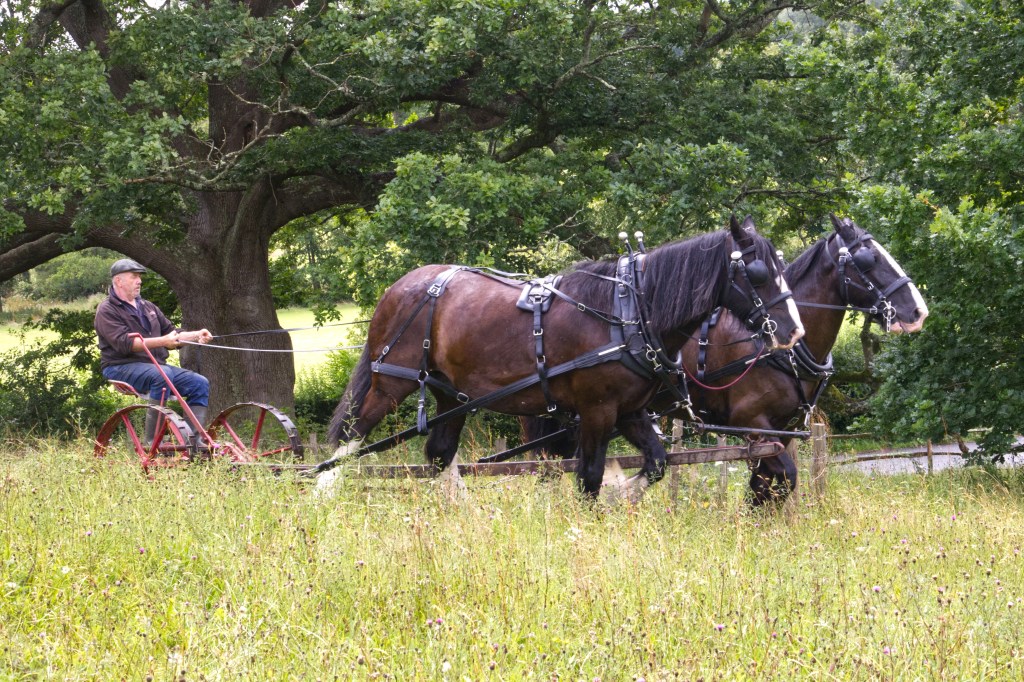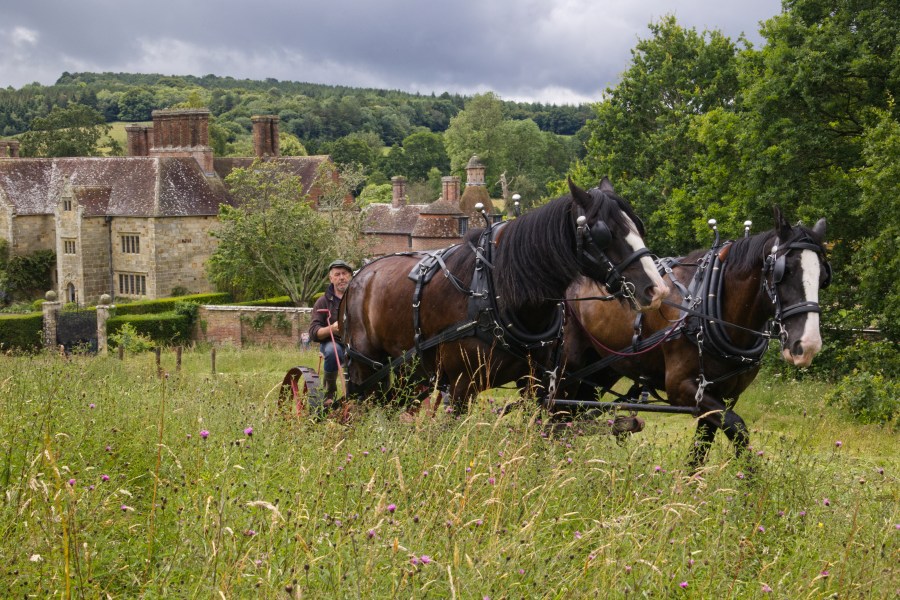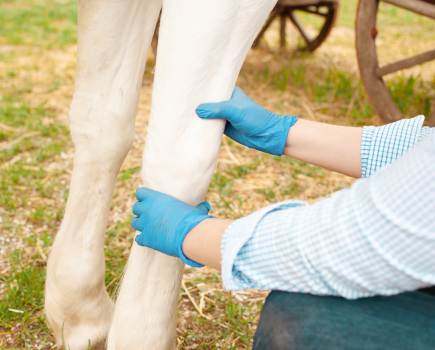Clydesdales are helping regenerate wildflower meadows on the Scotney Castle estate and at Bateman’s in Kent, both cared for by the National Trust, this summer, with two heavy horses joining the ranger team for mowing duties.
The horses have been chosen over modern machines to cut back the meadow towing a type of Allen Scythe, as they tread more lightly than modern machinery, causing less damage and compaction to the soil and resident wildlife including lizards and snakes.
The horses will then use a large rake to collect the cuttings ready for bailing, with the bails then sold to raise money to continue to care for the landscape in future years.
Mowing helps wildflower meadows to regenerate by creating soil conditions favoured by wildflowers. By removing vegetation like native grasses and nettles, it prevents the nutrients that had been drawn up and stored in these plants from re-entering the soil, as would happen if they were left to decompose naturally, thereby temporarily reducing the soil’s nutrient levels.
Wildflowers such as rare orchids prefer such nutrient-reduced habitats, and will consequently be able to thrive. These flowers in turn attract insects, butterflies and birds, bringing more biodiversity into the landscape.

The two Clydesdale horses, Bailey and Percy, mowing the wildlfower meadows at Batemans. Credit: National Trust Images, Laurence Perry
“The rarest wildflower we currently find in this meadow is the common spotted orchid, which adds beautiful purple accents to the landscape and mixes in exciting ways with the vibrant yellows of other wildflowers including crowfoots and birds-foot trefoil, the soft lilacs of forget-me-nots, bugles and knapweed and the brilliant whites of pignut and ox-eye daisies,” said Richard Newman, Area Ranger at Scotney Castle.
“Through this work, we are hoping that we’ll eventually be able to spot other rare wildflowers, like curiously shaped bee orchids, in the mix.”
It is the first time heavy horses – in this case two Oakwood Clydesdales called Bailey and Percy – have been used for meadow mowing at scale by the National Trust at Scotney, following a small test in the grounds last year.
“After experimenting last year, we noticed how well the meadow bounced back with even more wildflowers,” added Richard. “We believe this is mainly because the horses cause much less compaction of the soil, so the wildflowers are able to break through again quickly. The light fertilisation from horse manure is an added bonus!”

Bailey and Percy at Batemans. Credit: National Trust Images, Laurence Perry
In the High Weald where Scotney Castle is located there is a long tradition of using animals to care for the land. Historically oxen were used by farmers to negotiate the deep valleys, small fields and numerous streams and rivers of the Weald. Like heavy horses, oxen were robust yet did not sink in the very muddy, clay-based soil that causes issues for modern machinery like tractors.
The Scotney team will be putting the horses to work in a meadow near to neighbouring Kilndown village. The pair were brought in earlier in the year to prepare the field, removing dense winter thatch using a chain harrow. This gave the wildflowers the best possible chance of pushing through the soil to thrive this summer.
At Bateman’s, the horses will help mow the property’s two in-hand meadows, Donkey Field and Lower Brook Meadow, to restore just under four acres of rich grassland habitats which are no longer accessible by heavy machinery following the repair of the site’s mill pond wall.
The work is a continuation of the conservation work that has already taken place at the property, where heavy horses were used for timber extraction from the woodlands at Scotney Castle.
Lead image credit: National Trust Images, Laurence Perry









